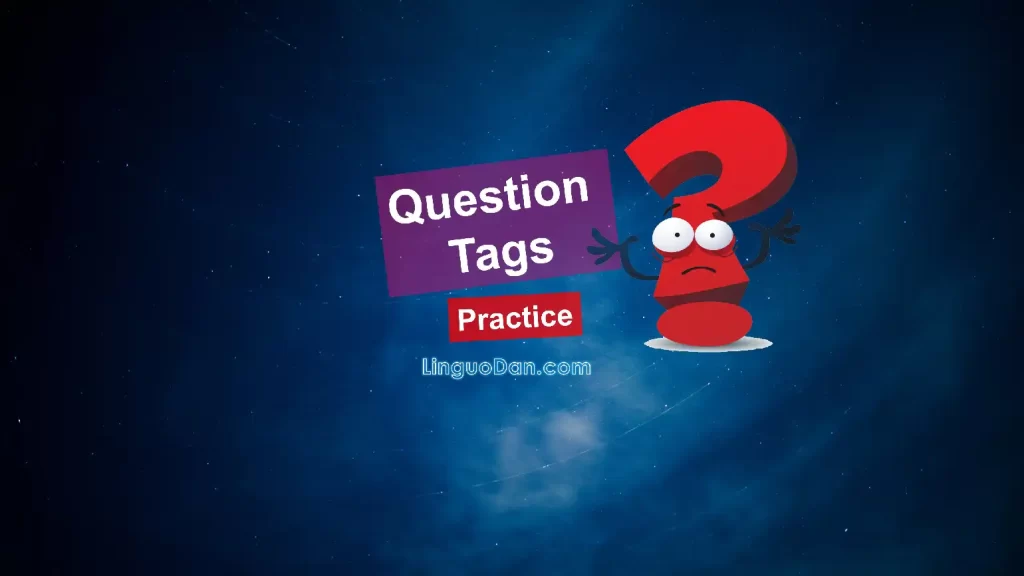Using Question Tags in Practice – Grammar Test

Using Question Tags in Practice in English
Question tags are short phrases that are added to the end of statements to form questions. Using them correctly requires knowledge of grammar rules. This article offers practice in understanding question tags in English by answering the 22 questions below. For each statement, choose the best option (one of 5) to form a question tag and create a grammatically correct question. Watch for matching the tense and verb form, as well as properly using positive and negative question tags.
To begin, we recommend reviewing the grammar to remind yourself of the rules and usage of question tags.
Forming Question Tags
- Auxiliary Verbs: The auxiliary verb used in a question tag depends on the tense of the main verb in the sentence. For example:
- Present tense: She is happy, isn’t she?
- Past tense: They went to the party, didn’t they?
- Modal verbs: You can swim, can’t you?
- Pronouns: The pronoun used in the question tag should match the subject of the sentence. For example:
- He is coming, isn’t he?
- They were late, weren’t they?
- She can dance, can’t she?
- Negative to Positive and Vice Versa: If the statement is positive, the question tag is usually negative, and vice versa. For example:
- Positive statement: You like chocolate, don’t you?
- Negative statement: He didn’t finish his homework, did he?
Common Uses of Question Tags
- Seeking Confirmation: Question tags are often used to confirm information or to seek agreement from the listener.
- You enjoyed the movie, didn’t you?
- She’s from Spain, isn’t she?
- Softening Statements: Adding a question tag can soften a statement, making it sound less direct or confrontational.
- You’re not busy, are you?
- It’s quite chilly outside, isn’t it?
- Engaging the Listener: Question tags can be used to engage the listener in conversation, inviting them to respond.
- This coffee is delicious, isn’t it?
- We’re having a great time, aren’t we?
Common Mistakes to Avoid
- Using Incorrect Auxiliary Verbs: Make sure to use the correct auxiliary verb based on the tense of the main verb in the sentence.
- Mismatched Pronouns: Ensure that the pronoun in the question tag matches the subject of the sentence.
- Forgetting the Comma: Always separate the statement from the question tag with a comma.
Simple Present Tense – Question tags
| Positive Statement | Negative Tag | Negative Statement | Positive Tag |
|---|---|---|---|
| I am | Aren’t I? | I am not | Am I? |
| You are | Aren’t you? | You are not | Are you? |
| He is | Isn’t he? | He is not | Is he? |
| She is | Isn’t she? | She is not | Is she? |
| It is | Isn’t it? | It is not | Is it? |
| They are | Aren’t they? | They are not | Are they? |
| We are | Aren’t we? | We are not | Are we? |
Simple Past Tense – Question tags
| Positive Statement | Negative Tag | Negative Statement | Positive Tag |
|---|---|---|---|
| I was | Wasn’t I? | I was not | Was I? |
| You were | Weren’t you? | You were not | Were you? |
| He was | Wasn’t he? | He was not | Was he? |
| She was | Wasn’t she? | She was not | Was she? |
| It was | Wasn’t it? | It was not | Was it? |
| They were | Weren’t they? | They were not | Were they? |
| We were | Weren’t we? | We were not | Were we? |